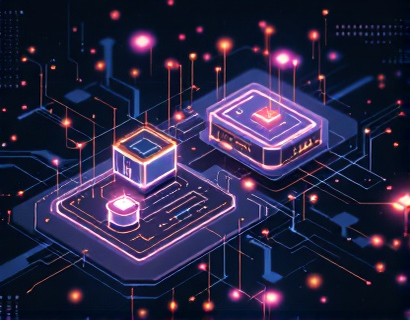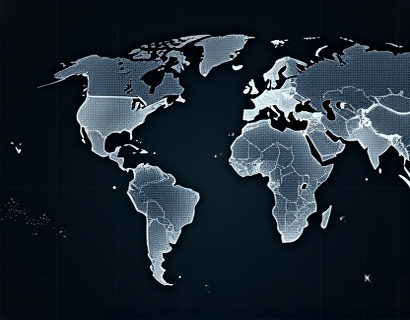Revolutionizing Business and Personal Connectivity: Cutting-Edge Telecom and Internet Solutions for Enhanced Efficiency and Reliability
The landscape of business and personal connectivity is undergoing a profound transformation, driven by advancements in telecommunications infrastructure and specialized software solutions. These innovations are pivotal in enhancing connectivity and communication, ensuring that both businesses and individuals can access essential digital services with unparalleled efficiency and reliability. The importance of quality and customer satisfaction cannot be overstated in this context, as they are the cornerstones of delivering robust and tailored digital experiences.
Modern telecommunications infrastructure forms the backbone of today's digital world. High-speed broadband, 5G networks, and fiber optic connections are revolutionizing the way data is transmitted and accessed. These technologies offer significantly faster data transfer rates, lower latency, and greater capacity, enabling seamless communication and data exchange. For businesses, this means the ability to operate more efficiently, with real-time data processing and instant communication across global teams. Individuals benefit from faster internet speeds, allowing for smooth streaming, gaming, and remote work without interruptions.
One of the key advancements in telecommunications is the deployment of 5G technology. 5G networks provide a substantial leap in performance compared to previous generations, with peak data rates reaching several gigabits per second. This capability supports the growth of Internet of Things (IoT) devices, autonomous vehicles, and advanced telemedicine applications. For businesses, 5G enables the deployment of smart factories, where machines and sensors communicate in real-time, optimizing production processes and reducing downtime. For individuals, 5G means faster downloads, higher quality video calls, and more responsive online experiences.
Beyond network speeds, the reliability and stability of telecommunications infrastructure are critical. Network redundancy and failover systems ensure that services remain uninterrupted even in the event of hardware failures or natural disasters. This reliability is particularly important for critical infrastructure and emergency services, where downtime can have severe consequences. Telecom providers are investing heavily in building resilient networks that can withstand various challenges, ensuring continuous connectivity for all users.
Specialized software solutions play a complementary role in enhancing connectivity and communication. Advanced network management tools enable providers to monitor and optimize network performance in real-time. These tools can detect and resolve issues before they impact users, ensuring a smooth and consistent experience. For businesses, this means maintaining high levels of service quality, which is essential for customer satisfaction and retention. Individuals benefit from a more stable and fast internet connection, enhancing their overall digital experience.
Cloud computing is another transformative technology that has revolutionized how data is stored and accessed. Cloud services offer scalable and flexible resources, allowing businesses to scale their operations up or down based on demand. This flexibility is crucial for startups and growing companies that need to adapt quickly to market changes. For individuals, cloud storage solutions provide convenient and secure ways to store and share files, eliminating the need for physical storage devices. The integration of cloud services with telecommunications infrastructure ensures that data can be accessed from anywhere, at any time, with high-speed connectivity.
The convergence of telecommunications and software solutions has given rise to innovative platforms that enhance business operations and personal connectivity. Unified Communication and Collaboration (UC&C) solutions, for example, integrate voice, video, messaging, and collaboration tools into a single platform. This integration streamlines communication, reduces the need for multiple tools, and improves productivity. For businesses, UC&C solutions facilitate seamless collaboration among remote teams, reducing time zone challenges and enhancing project management. Individuals can use these platforms for personal communication, making it easier to stay connected with family and friends regardless of location.
Cybersecurity is an essential aspect of modern telecommunications and software solutions. As digital services become more integral to daily life, the risk of cyber threats increases. Providers must implement robust security measures to protect user data and ensure the integrity of their networks. Advanced encryption, intrusion detection systems, and regular security audits are some of the measures employed to safeguard against cyber threats. For businesses, strong cybersecurity is not only a matter of protecting sensitive information but also maintaining customer trust. Individuals rely on secure connections to protect their personal data and privacy online.
The impact of these advancements extends beyond just technical improvements. They have a significant economic and social impact. Economically, enhanced connectivity and reliable digital services foster innovation and productivity, driving economic growth. Businesses can reach wider markets, improve operational efficiency, and reduce costs, leading to increased competitiveness. On a social level, improved connectivity bridges the digital divide, providing access to education, healthcare, and other essential services to underserved communities. This inclusivity is crucial for building a more equitable society.
To achieve these benefits, it is essential for telecom providers and software solution developers to prioritize quality and customer satisfaction. This involves not only delivering high-performance infrastructure and services but also providing exceptional customer support. Responsive and knowledgeable support teams can help users troubleshoot issues, optimize their services, and get the most out of their digital tools. Satisfied customers are more likely to remain loyal and recommend services to others, contributing to the overall success of the provider.
In the realm of business, the focus on quality and customer satisfaction translates to better service levels and higher customer retention rates. Businesses that experience reliable and efficient connectivity can focus on their core operations without being hindered by technical issues. This, in turn, leads to increased productivity and better customer service. For individuals, a reliable and fast internet connection means a better quality of life, with fewer disruptions and more opportunities for online engagement.
The future of telecommunications and internet connectivity holds even more promise. Emerging technologies such as edge computing, artificial intelligence, and quantum networking are set to further transform the landscape. Edge computing, for instance, brings data processing closer to the source, reducing latency and improving response times. AI can be used to predict and prevent network issues, optimize resource allocation, and personalize user experiences. Quantum networking promises ultra-secure and ultra-fast communication channels, opening up new possibilities for data transmission.
For businesses, embracing these emerging technologies can provide a competitive edge. By leveraging edge computing, companies can process data in real-time, enabling faster decision-making and more efficient operations. AI-driven insights can help businesses gain deeper insights into customer behavior, market trends, and operational efficiencies. Quantum networking could revolutionize secure communications, ensuring that sensitive data remains protected from even the most sophisticated cyber threats.
For individuals, these advancements mean a more seamless and secure digital experience. Edge computing can enhance streaming services, making them more responsive and high-quality. AI-powered personal assistants can simplify daily tasks, from managing schedules to providing personalized recommendations. Quantum-secured connections will ensure that personal data remains private and secure, giving users peace of mind as they navigate the digital world.
In conclusion, the evolution of telecommunications infrastructure and software solutions is revolutionizing business and personal connectivity. The combination of high-speed networks, advanced software tools, and a focus on quality and customer satisfaction is creating a digital landscape where efficiency, reliability, and innovation thrive. As these technologies continue to advance, the potential for further improvements and new opportunities is vast. Embracing these changes is essential for businesses to stay competitive and for individuals to enjoy a better digital life.










































